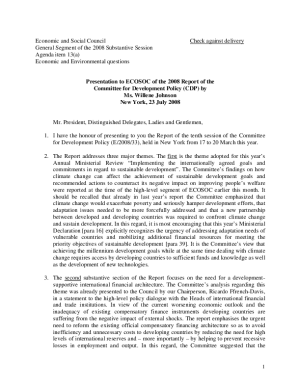August 2009
Summary:?
- The global recession is moderating, with trade and industrial production stabilizing and financial markets partially improving
- The prospects of a true global recovery are highly uncertain as demand continues to largely depend on fiscal stimuli, unemployment rates continue to rise, and global imbalances remain large
- The prospects also vary significantly across regions and individual countries. Several economies, mostly in Asia, have rebounded in the second quarter of 2009, but many other economies remain mired in recession
- The economic crisis has triggered a prodigious global trade shock, equivalent to about 4 per cent of world output. Countries with a strong concentration of exports in the energy sector have proved to be the most vulnerable to such shocks, followed by manufacturing and mineral exporters
After a sharp synchronized global downturn in late 2008 and early 2009, the world economy has shown signs of stabilization
entering the second half of 2009, with prospects of a recovery in some parts of the world. Financial markets worldwide have
stabilized in the second quarter, with equity prices rebounding and risk premiums narrowing. International trade and industrial production have also recuperated measurably on a month-on-month basis in many Asian countries, with the strength?partly spreading to Latin America and other regions. Despite the most recent improvement in global financial markets, credit conditions remain tight in major developed economies. Most financial institutions are still in the stage of deleveraging and consolidating and cleansing of their balance-sheets. In many countries, the recovery of domestic demand remains tentative at best and is far from autonomous, being highly dependent on policy support. The high unemployment rates and the large output gap worldwide will continue to linger as the key downside risks for the global recovery.
?
 Welcome to the United Nations
Welcome to the United Nations
